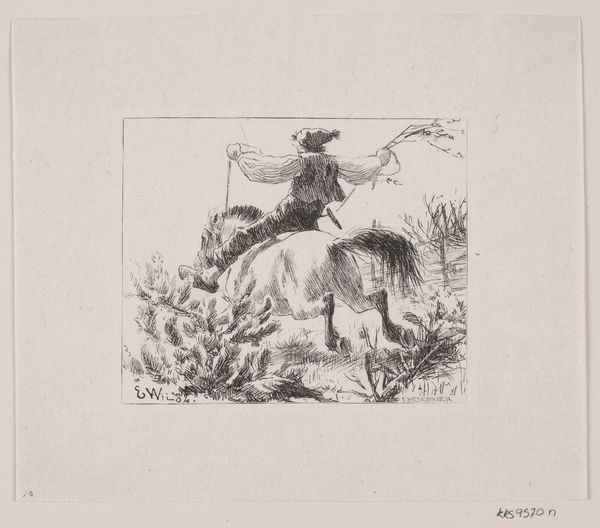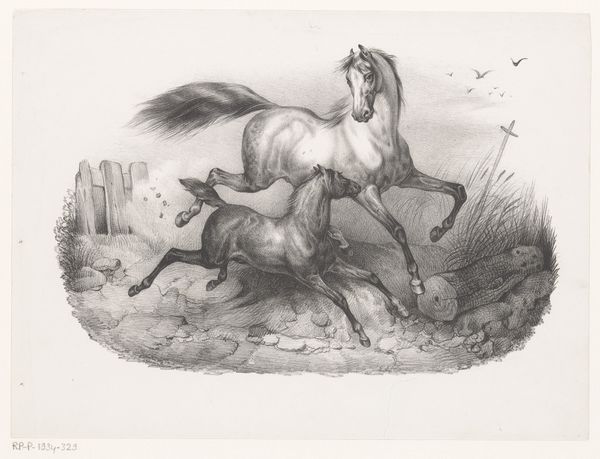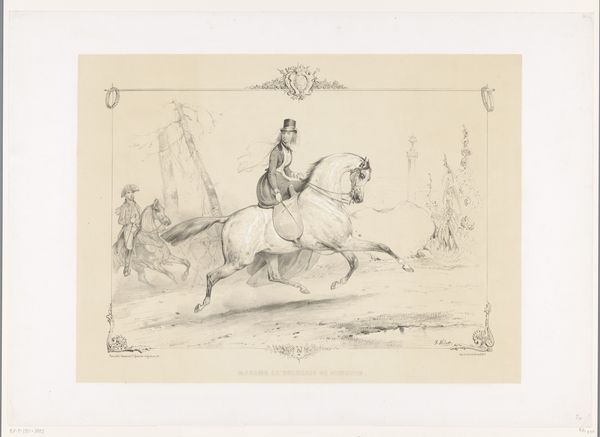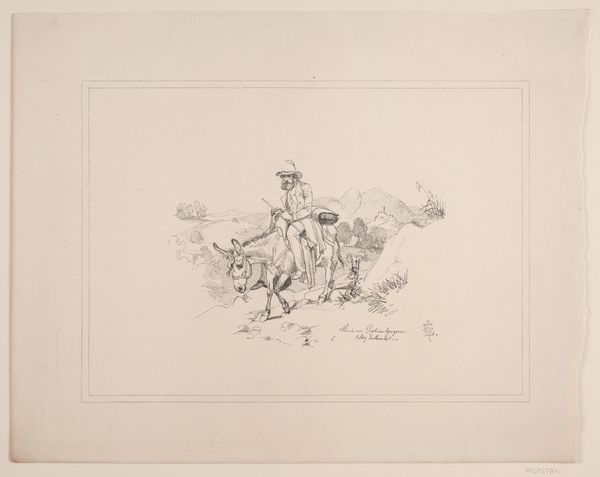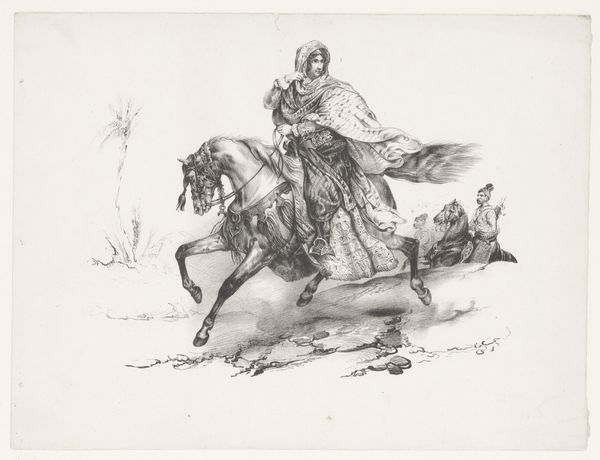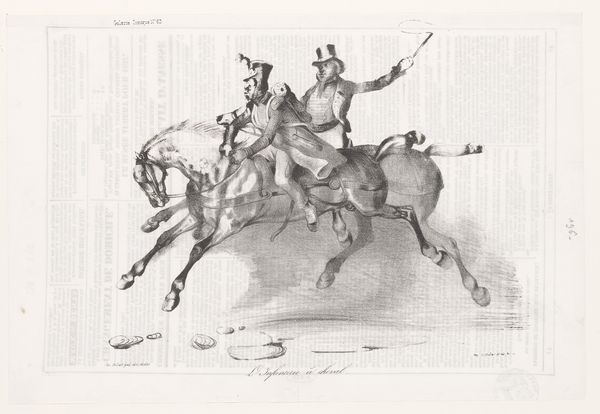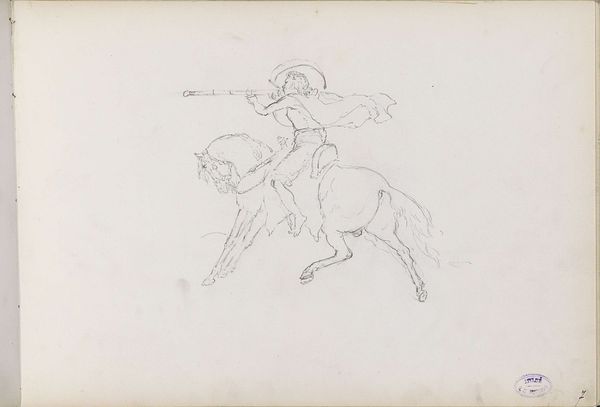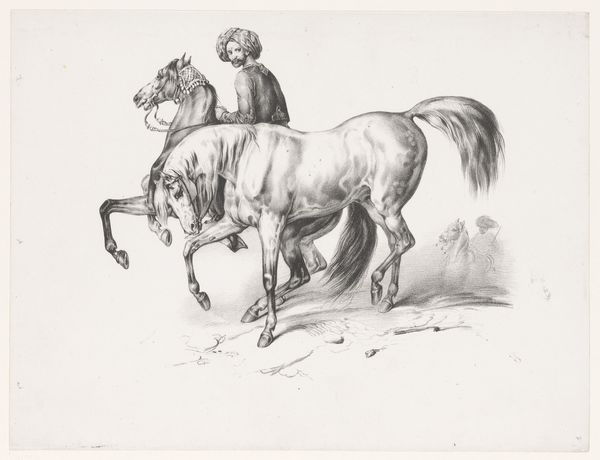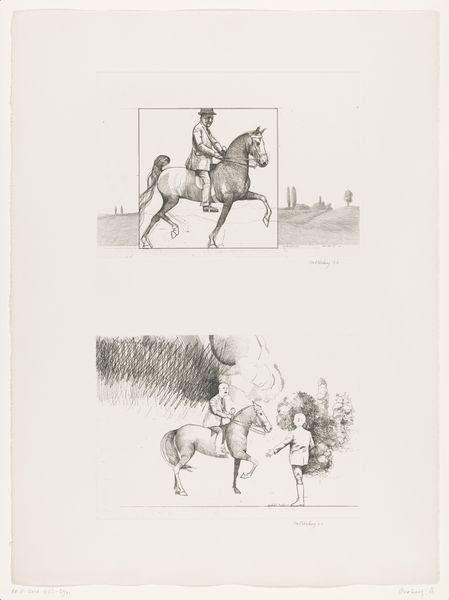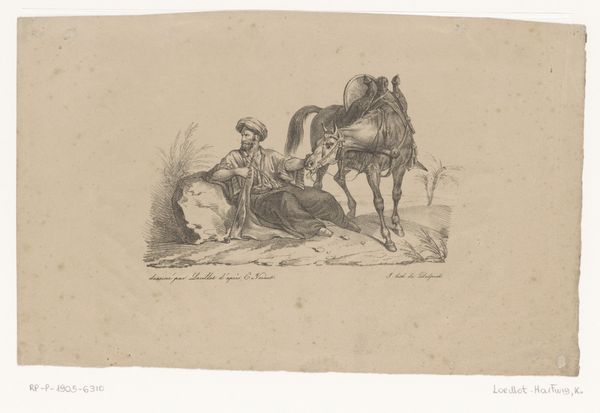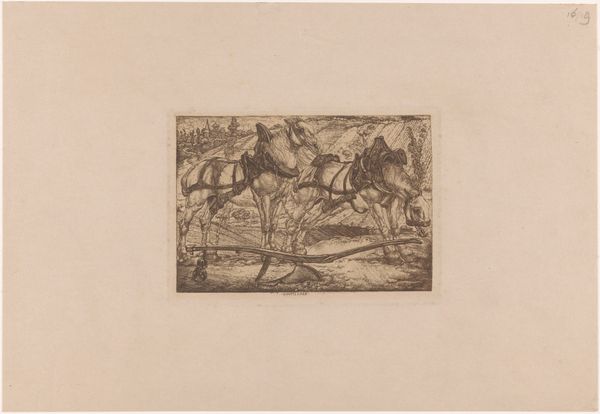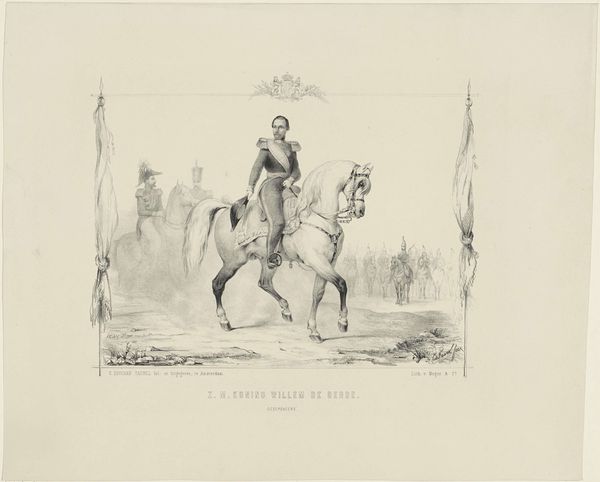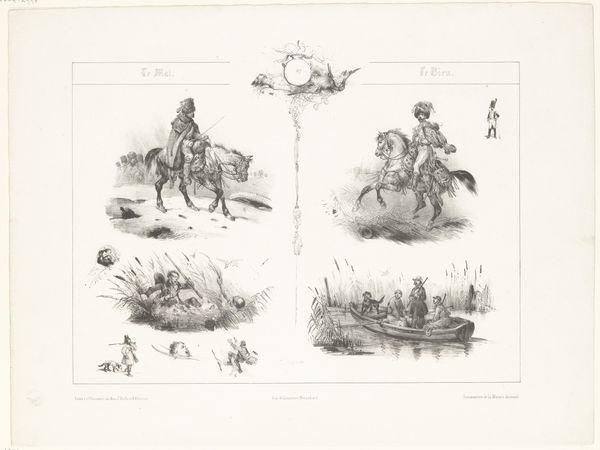
drawing, ink, pencil
#
portrait
#
drawing
#
narrative-art
#
ink
#
group-portraits
#
romanticism
#
pencil
#
cityscape
#
history-painting
#
academic-art
#
realism
Dimensions: height 395 mm, width 554 mm
Copyright: Rijks Museum: Open Domain
Curator: This striking print is Victor Adam's "Equestrian Portrait of the Duke of Nemours," created in 1838. It's a dynamic drawing rendered in pencil and ink, currently residing here at the Rijksmuseum. Editor: My immediate sense is of staged drama. It’s all about valor, but the theatrical arrangement of the dead soldier and rearing horse seems almost too perfect. Curator: Well, let's delve a bit deeper. The Duke of Nemours, son of King Louis-Philippe, was a prominent figure, especially in the context of French colonial expansion. This image played a role in constructing a heroic narrative around him and the monarchy. The event presented seems glorious. Editor: I see how the rearing horse serves as an almost universal symbol of power and dominance. The Duke, pointing forward, appears as a decisive leader, guiding his troops towards victory. It is not subtle! Do you think the framing border ornamented with classical motifs reinforces the message, attempting to create a connection to legendary heroes of the past? Curator: Precisely! The framing—with the draped cloth, weapons, and foliage—clearly borrows from classical traditions of triumphal imagery, aligning the Duke with the likes of Roman emperors. We can see an effort to manufacture an important legacy here. Note that this wasn’t about accurately documenting war; it was about shaping public perception. Editor: The fallen soldier and the chaos in the background provide a somber contrast, although they, too, seem strategically placed. They add to the scene a sense of consequence and sacrifice. Even they reinforce the importance of the leader. How was it received at the time, I wonder? Curator: Prints like these had wide circulation and played a crucial role in bolstering the image of the monarchy during a period of political instability. While critics existed, these visuals were powerful tools in shaping public memory and allegiance. It's a great reminder that visual culture is never neutral. Editor: A powerful blend of reality and strategic messaging, it seems. Reflecting on it now, it makes you question the narratives presented to us through images even today. Curator: Exactly, and examining art through the lens of history empowers us to become more critical consumers of these narratives, recognizing the social and political forces at play.
Comments
No comments
Be the first to comment and join the conversation on the ultimate creative platform.
